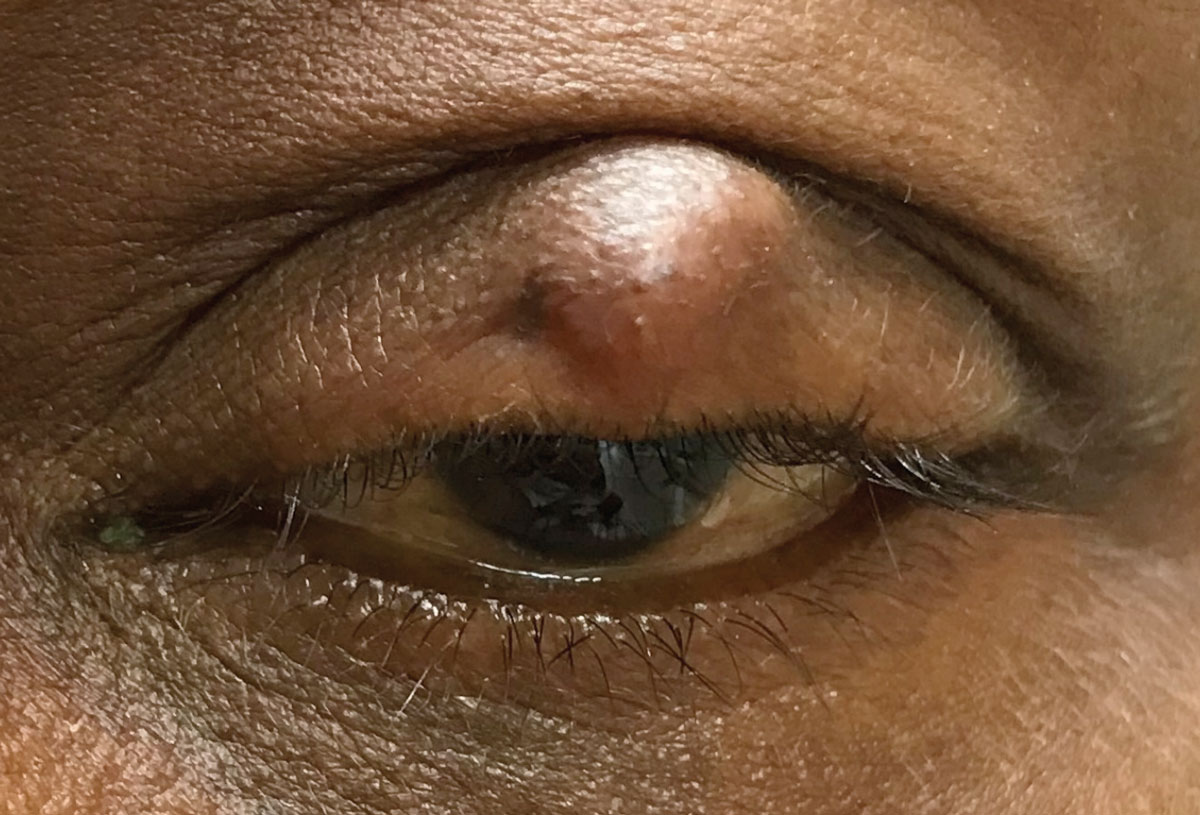 |
| Chalazia were the most common finding of the image-based telehealth effort that ran for a year during the height of the pandemic. Photo: Joseph W. Sowka, OD. Click image to enlarge. |
The COVID-19 pandemic spurred a rapid expansion of virtual services in eye care and the wider medical world. In early 2020, an NHS board in Scotland conducted a pilot study comparing usual standard of care in the UK (a face-to-face consultation with an ophthalmologist) to a consultation with a hospital optometrist and review of eyelid lesion photographs by a consultant ophthalmologist and a technician-led eyelid photograph clinic with images reviewed later by a consultant ophthalmologist. They found that the photography-based service was not inferior to the traditional consultant-led service, with a low-risk for missed malignancies. This led to the implementation of a technician-led image-based eyelid lesion service. The first-year results of the service, published in Eye, found that an image-based asynchronous teleconsultation model for assessing patients with presumed benign eyelid lesions was efficient and safe.
Data was collected retrospectively on 808 patients seen in NHS Greater Glasgow and Clyde eyelid photography clinics from September 2020 to September 2021, including referral source and diagnosis, time to clinic review, treatment and patient outcomes.
Chalazion was the most common diagnosis recorded (38.4%). There was a statistically significant decrease in mean time from referral to appointment time between the first four months and last four months of the service (93 days to 22 days). The researchers found that 33% of patients were discharged following photographs, 6% were discharged for non-attendance and 46% were booked for a minor procedure.
The service identified 13 biopsy-confirmed malignant lesions; only three had been referred as suspected malignancy. Still, the researchers noted that 23 patients out of 330 with at least six months follow-up (7%) were re-referred within six months of treatment or discharge; however, none of them had a missed periocular malignancy.
“This study was not specifically designed to assess cost implications of our image-based eyelid lesion management service; however, we feel the service is likely to be more cost-effective than a traditional face-to-face model,” the researchers wrote in their paper. “It is able to reduce waiting times for an assessment appointment, allow clinicians to work flexibly and minimize use of clinic consultation space while accurately identifying periocular malignancies requiring prompt treatment.”
“While it was performed at a single center, there were a number of photographers and consultant reviewers who evaluated patients,” they added. “So, we feel these findings could be replicated at other units, and the results are not likely influenced by any individual photographer or clinician.”
Gillam M, Younus O, Loo S-P, et al. Is an image-based eyelid management service safe and effective? Eye (Lond). May 24, 2023. [Epub ahead of print]. |


